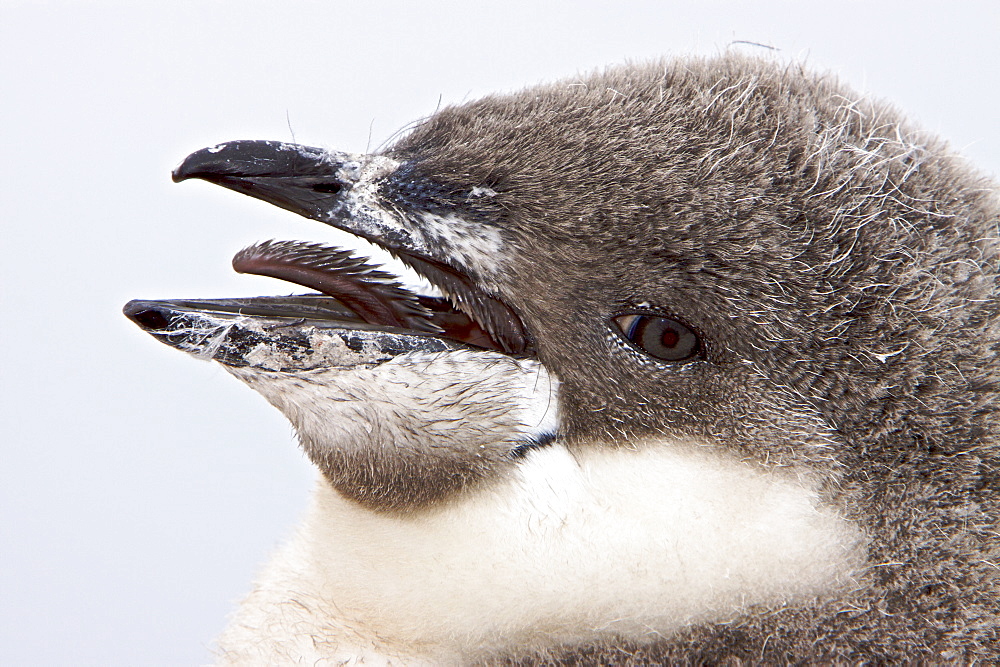Preview

Chinstrap penguin (Pygoscelis antarctica) chick head detail at colony on Useful Island near the Antarctic Peninsula. There are an estimated 2 million breeding pairs of chinstrap penguins in the Antarctic peninsula region alone, perhaps as many as 7.5 million breeding pairs in all of Antarctica. Their name derives from the narrow black band under their heads which makes it appear as if they are wearing black helmets, making them one of the most easily identified types of penguin. Other names for them are "Ringed Penguins", "Bearded Penguins", and "Stonecracker Penguins" due to their harsh call. They grow to 68 cm (27 in). The average adult weight of a Chinstrap Penguin is 4.5 kg (10 lbs). Weight can range from 3 to 6 kg (6.6-13.2 lbs), with males being slightly larger and weight varying based on where the penguin is in the breeding cycle. Their diet consists of krill, shrimp, and fish. On land they build circular nests from stones, and lay two eggs, which are incubated by both the male and the female for shifts of five to ten days. They can also breed on icebergs, though they prefer non-icy conditions. The chicks hatch after about 35 days, and have fluffy gray backs and white fronts. The chicks stay in the nest for 20?30 days before they go to join a creche. At around 50?60 days old, they moult, gaining their adult plumage and go to sea. The Chinstrap Penguin was first described by German naturalist Forster in 1781. Its specific epithet was often seen as antarctica, however a 2002 review determined the genus Pygoscelis was masculine, and hence the correct binomial name is Pygoscelis antarcticus.
| Image ID: | 979-7139 |
|---|---|
| Artist: | Michael Nolan |
1
animal behaviour
animal
animal gender
animal group
animalia
animals
antarctic
animal behaviours
animal themes
animal theme
antarctic peninsula
antarctica
antarctis
baby chickens
baby chicken
babies
baby
baby animals
baby animal
behaviours
behaviour
chinstrap penguin
chinstrap penguins
color
color image
color images
colour images
colour image
colour
chicks
chick
circumpolar
close
close ups
close up
close ups
close up
day
days
free
feathers
feather
fluff
fluffy
horizontal
horizontals
immature
in the wild
juvenile
landscape
male
males
marine animals
marine animal
marine life
marine life
marine
maritime
maritime climate
natural environment
natural environments
natural habitat
natural habitats
no one
no people
no person
no body
no one
nobody
oceanic
ocean
oceanic climate
one animal
one
outdoors
outside
penguin
pygoscelis antarcticus
penguins
plumage
spheniscidae
sphenisciformes
sea animal
sea
sea animals
sea bird
sea birds
sea creatures
sea creature
sea life
seabird
seabirds
sealife
sex
south
south pole
standing
stand
texture
up close
up close
upclose
wild animal
wild animals
wild life
wild life
wild
wildlife
young animal
young animals
young
young chicken
young chickens
yearling
yearlings
youngsters
s059
s059 te